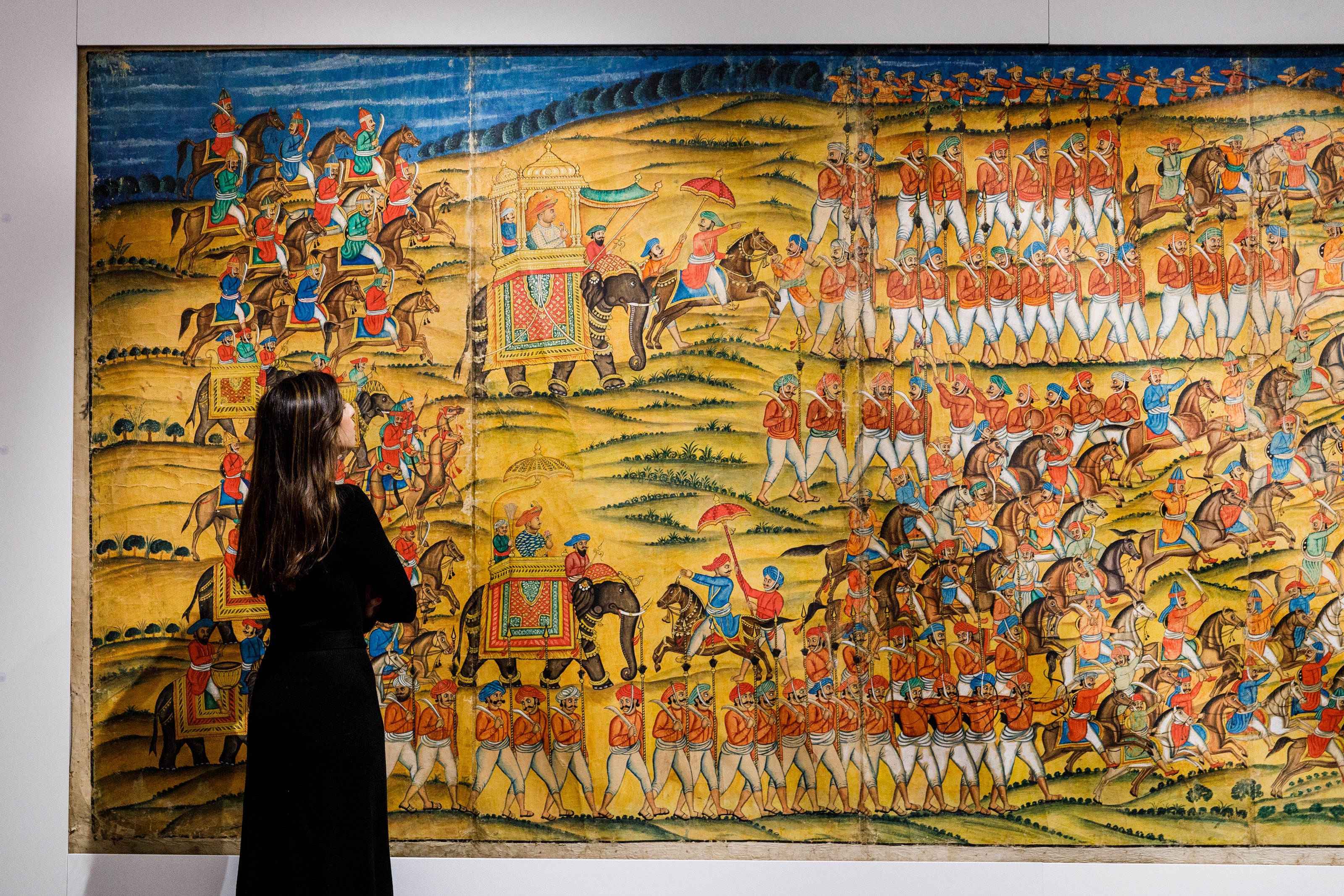Painting capturing victory of Indian rulers over British East India Company sold for £630,000
Painting captures ‘most crushing defeat’ of East India Company which ‘nearly ended British rule in India’

Your support helps us to tell the story
From reproductive rights to climate change to Big Tech, The Independent is on the ground when the story is developing. Whether it's investigating the financials of Elon Musk's pro-Trump PAC or producing our latest documentary, 'The A Word', which shines a light on the American women fighting for reproductive rights, we know how important it is to parse out the facts from the messaging.
At such a critical moment in US history, we need reporters on the ground. Your donation allows us to keep sending journalists to speak to both sides of the story.
The Independent is trusted by Americans across the entire political spectrum. And unlike many other quality news outlets, we choose not to lock Americans out of our reporting and analysis with paywalls. We believe quality journalism should be available to everyone, paid for by those who can afford it.
Your support makes all the difference.A historical painting showing the victory of Indian ruler Tipu Sultan against the British troops of East India Company was sold for £630,000 at an auction hosted by Sotheby’s on Wednesday.
“This vividly illustrated monumental painting depicts the Battle of Pollilur, which took place on 10 September 1780, as part of the Second Anglo-Mysore War,” a catalogue note confirming the auction read.
A key battle in the history of India, the clash at Pollilur — which now falls in southern India’s Tamil Nadu — was led by Tipu Sultan in the 18th century and inflicted on the East India Company “the most crushing defeat the Company would ever receive, and one which nearly ended British rule in India”, historian William Dalrymple said.
Stitched together across 10 sheets of paper and almost 32ft long, the richly-coloured painting shows the moment from the battle when the ammunition tumbril of East India Company exploded, destroying the British square.
It captures Tipu’s troops advancing on British fighters from left and right “like waves of an angry sea”, Mughal historian Ghulam Husain Khan said.
The right side of the painting shows French commander Lally peering triumphantly through his telescope “but Haidar and Tipu look on majestically and impassively at their triumph, while Tipu, with magnificent sang-froid sniffs a single red rose as if on a pleasure outing to a garden to inspect his flowers”, according to Mr Dalrymple.
Tipu, who is from one of the ancient dynasties that ruled India and is known as the Tiger of Mysore, had himself commissioned the painting of the Battle of Pollilur as a visual record and to commemorate his victory.
It was part of a large mural for the newly built princely palace Daria Daulat Bagh in present-day Srirangapatna, Karnataka, in 1784.
Mr Dalrymple explained that the painting carries the “terror and anarchy and violence of battle”.
“It’s arguably the greatest Indian picture of the defeat of colonialism that survives. It’s unique and fantastic artwork,” Mr Dalrymple said.
“Tipu Sultan was probably the most effective opponent that the East India Company ever faced. Tipu showed that the Indians could fight back, that they could win… the first time that a European army is defeated in India is this Battle of Pollilur,” the author of The Anarchy: The Relentless Rise of the East India Company said.
The painting has some areas of water damage and staining, repaired tears along the edges and minor buckling to surface but its overall colours are bright, the auction house said.
Join our commenting forum
Join thought-provoking conversations, follow other Independent readers and see their replies
Comments